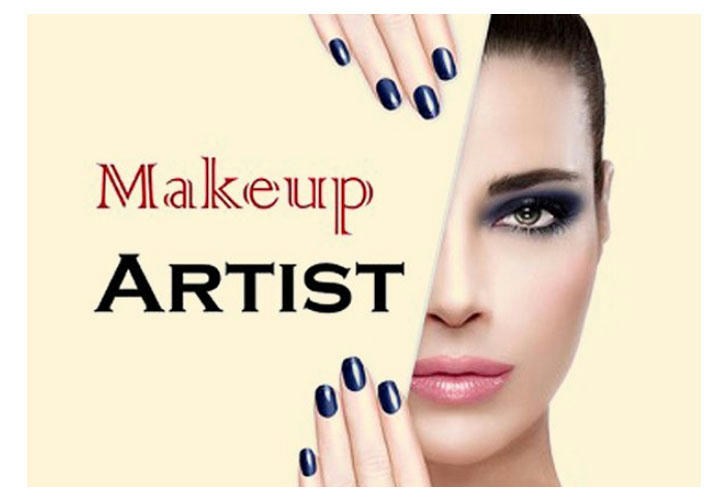Glow Up in 2025: Top Makeup Artistry Courses & Must-Have Tools
Dreaming of turning your passion for beauty into a skillset—or even a new career? Makeup artistry courses unlock the secrets behind flawless foundations, stunning eye looks, and red-carpet ready glam. Whether you want to master everyday natural makeup or create avant-garde effects for special events, online and in-person programs in 2025 offer flexibility, community support, and hands-on practice. Let’s dive in!

1. Why Enroll in a Makeup Artistry Course?
- Learn Professional Techniques: From color theory to contour sculpting, courses teach you step-by-step methods used by industry pros.
- Flexible Learning: Choose self-paced online modules or weekend hands-on workshops to fit your schedule.
- Portfolio Building: Guided assignments and peer feedback help you create a body of work for social media or client pitches.
- Certification & Credibility: Many programs offer recognized certificates, boosting your resume for salon, bridal, or entertainment gigs.
- Community & Networking: Connect with instructors and fellow artists—share tips, collaborate on shoots, and find mentorship.
Whether you’re a complete beginner or refining your skills, structured courses fast-track your growth and confidence.
2. Top Course Formats for 2025
a) Comprehensive Certification Programs
- Duration: 8–12 weeks
- Content: Skin analysis, product knowledge, bridal makeup, editorial and special effects modules.
- Perks: Live demos, one-on-one instructor critiques, and digital certificates.
b) Masterclasses & Workshops
- Duration: 1–3 days
- Content: Focused topics like “Smoky Eye Secrets” or “Airbrush 101.”
- Perks: Small groups, instant feedback, and high-intensity hands-on practice.
c) Short-Form Online Tutorials
- Duration: 30–60 minutes per lesson
- Content: Quick tips on brows, lashes, or color correction.
- Perks: Lifetime access, community forums, and frequently updated content.
Choose based on your goals: full certification versus skill-specific sessions or quick refreshers.
3. Curriculum Highlights
Regardless of format, most makeup artistry courses cover:
- Skin Prep & Care: Cleansing, moisturizing, and priming for a smooth canvas.
- Foundation & Concealer: Shade matching, blending techniques, and layering without caking.
- Eye Artistry: From natural daytime looks to dramatic cut creases and graphic liners.
- Contouring & Highlighting: Sculpting facial features with light and shadow.
- Color Theory: Understanding complementary and analogous palettes for any skin tone.
- Lips & Brows: Perfect lip lining, ombré effects, and brow shaping.
- Sanitation & Hygiene: Proper brush cleaning, product hygiene, and client safety protocols.
- Special Effects (SFX): Basic bruising, age makeup, or fantasy designs for those advanced modules.
Hands-on practice followed by constructive critique cements these skills in real-world scenarios.
4. Essential Tools & Products
To thrive in your makeup course—and beyond—here are the must-haves:
Brush Set (10–15 pieces)
- Basics: Foundation, powder, blush, and eyeshadow.
- Extras: Angled liner brush, flat concealer brush, fluffy blending brush.
Professional Sponges & Blenders
- Soft, contour-friendly wedges and beauty blenders for flawless buffing.
Color-Correcting Palette
- Green, peach, lavender, and yellow shades to neutralize redness, dark circles, and sallowness.
Versatile Eyeshadow Palette
- A balanced mix of mattes, shimmers, and transition shades—urban neutrals work for most clients.
Liquid and Pencil Eyeliners
- Waterproof options for tightlining and winged looks.
Cream and Powder Contour Kits
- Dual-function products for both sculpting and setting.
Professional Lipstick & Gloss Range
- Reds, nudes, and seasonal shades to build your lipstick skills library.
Sanitizing Brush Cleanser & Tool Case
- Quick-dry solutions for in-class brush cleaning and a sturdy case with brush guards.
Makeup Mirror with LED Lighting
- Adjustable brightness and color temperature for accurate shade matching.
Makeup Chair (optional, for in-person workshops)
- Comfortable client seating with proper height for ergonomic application.
These tools cover the basics and let you experiment during course projects without needing a sprawling kit.
5. Study Tips & Practice Tricks
Daily Makeup Challenges
- Rotate through skin prep, contour, eye looks, and lips each day to build muscle memory.
Flashcard App for Products & Techniques
- Use digital flashcards to memorize product names, brush functions, and sanitation rules.
Portfolio Photoshoots
- Practice on friends or willing volunteers, photograph results, and upload to your digital portfolio.
Join Online Artist Communities
- Platforms like dedicated Facebook groups or Discord servers let you swap tutorials and get feedback.
Simulate Real Client Scenarios
- Role-play consultations, time trials, and “makeup on the move” (for brides with busy schedules).
Consistent, focused practice paired with course feedback accelerates your proficiency.
Conclusion
A makeup artistry course in 2025 is more accessible than ever—online modules, live workshops, and comprehensive certifications fit every learning style. Armed with core products like brush sets, color-correcting palettes, and LED mirrors, you’ll build the skills to create professional-level looks. Sign up today, set up your kit, and get ready to glow up your talent into a vibrant career or passionate hobby!
Happy blending and best of luck on your makeup journey!
